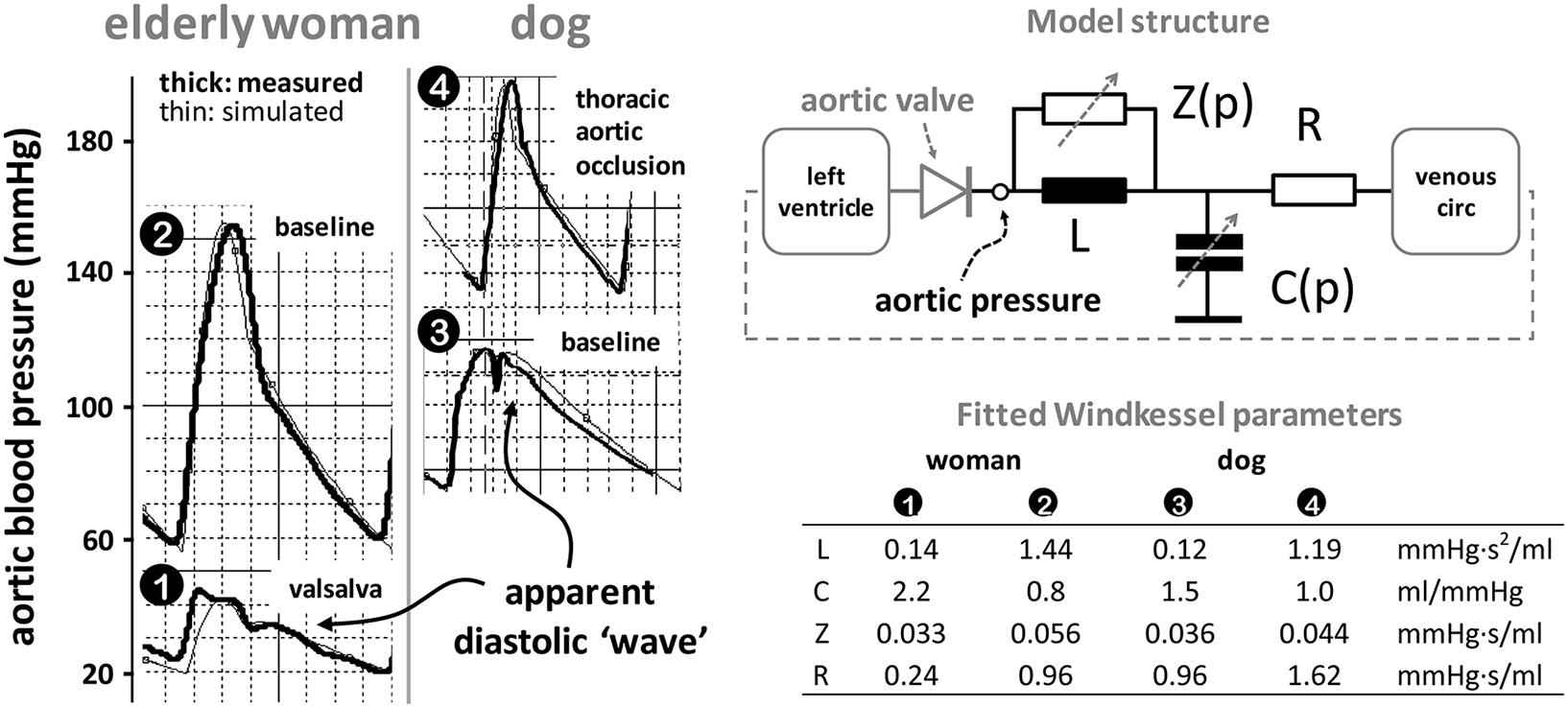P2.09 DIASTOLIC “WAVE” BELIES ITS UNDERLYING MECHANICS
- DOI
- 10.1016/j.artres.2012.09.090How to use a DOI?
- Open Access
- This is an open access article distributed under the CC BY-NC license.
Aortic blood pressure waveforms in young normotensive subjects exhibit a wave-like amplitude increase in diastole (Figure). Current views contend that this signals a reflected wave which summates with the incident arterial pulse wave, producing the dicrotic pulse waveform. With arterial stiffness (thus pulse wave velocity) increasing with age, the reflected wave will arrive earlier, augmenting systolic pressure while the diastolic ‘wave’ disappears. This paradigm assumes ventricular-arterial interaction is a linear time-invariant system, which is questionable because arterial compliance is pressure-dependent and the system contains a valve. We studied the diastolic ‘wave’ in a non-linear time-varying model and based on pressure recordings in an elderly woman and a dog, both showing the presence of a diastolic ‘wave’ at lower pressure but none at higher pressure (Fig.). Our analyses show that at lower pressures total inertia maintains ventricular outflow whilst pressure declines before valve closure and that upon valve closure a diastolic ‘wave’ is induced by conversion of kinetic into potential energy by vascular inertia (L). At higher pressures the associated lower arterial compliance (C) caused the diastolic peak to occur earlier in time. However, to fully simulate the high pressure data, L had to be 10 times the value at lower pressure (Table). Our findings suggest that in young normotensive subjects interplay between inertia and compliance reduces systolic pressure and induces the diastolic ‘wave’, while in old hypertensive subjects these effects are absent. We conclude that the mechanics underlying the diastolic ‘wave’ may not comply with the wave reflection paradigm.

Cite this article
TY - JOUR AU - K.D. Reesink AU - J.E. Davies AU - C.M. Park AU - K.H. Parker AU - A.W. Khir AU - A.D. Hughes PY - 2012 DA - 2012/11/17 TI - P2.09 DIASTOLIC “WAVE” BELIES ITS UNDERLYING MECHANICS JO - Artery Research SP - 166 EP - 166 VL - 6 IS - 4 SN - 1876-4401 UR - https://doi.org/10.1016/j.artres.2012.09.090 DO - 10.1016/j.artres.2012.09.090 ID - Reesink2012 ER -
